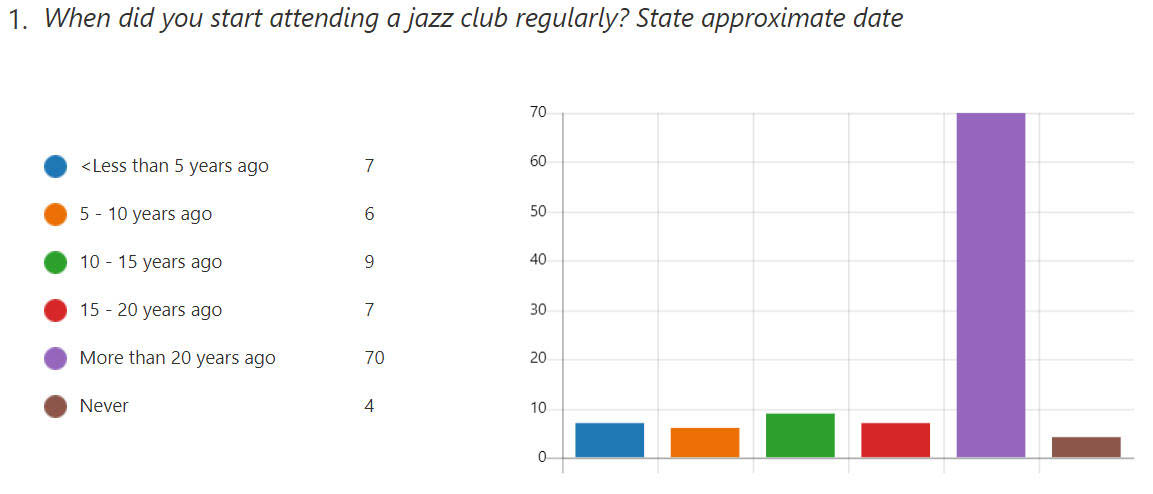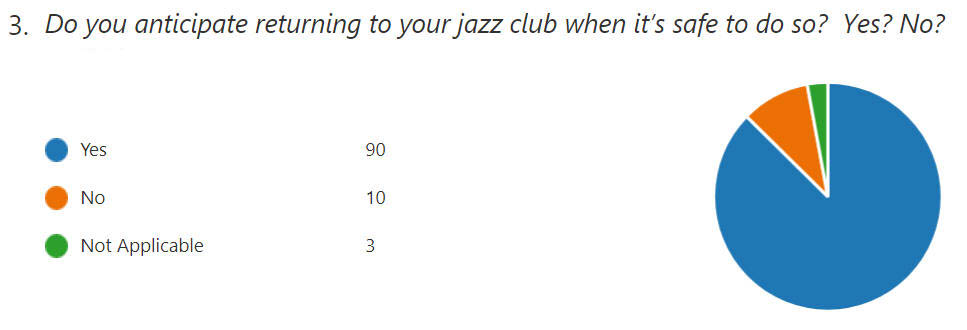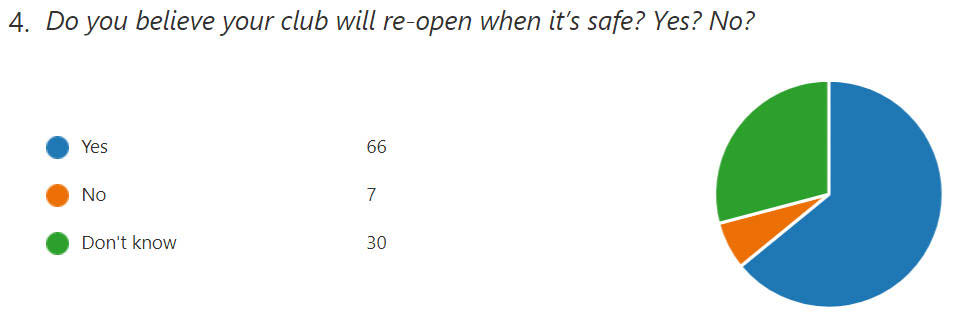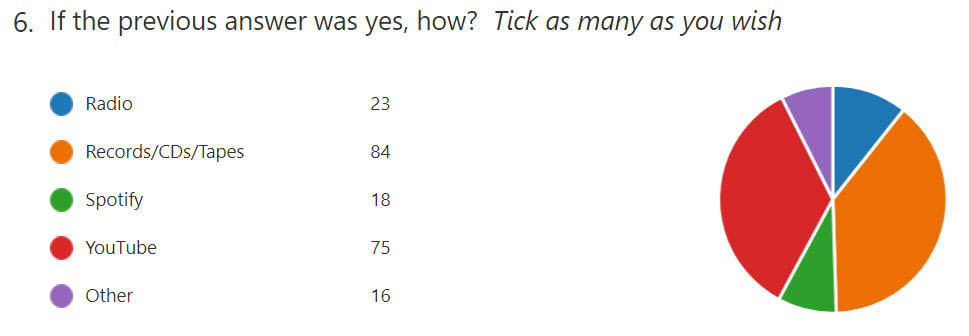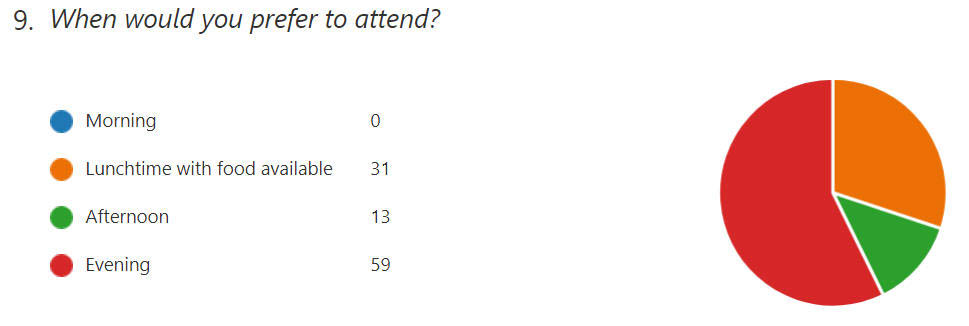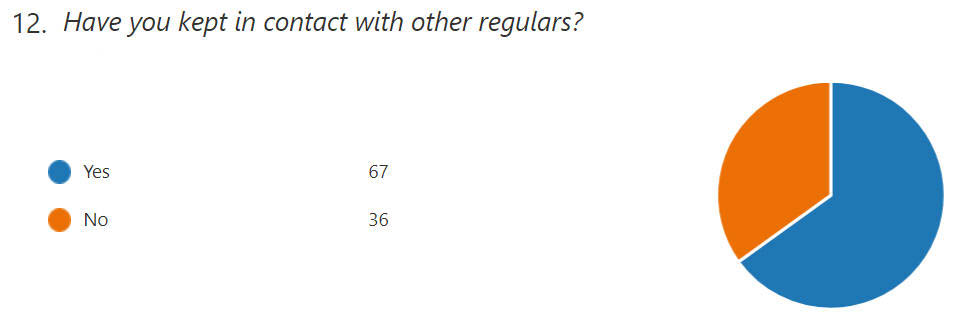|
Covid Lockdown JAZZ NORTHWEST CUSTOMER SURVEY The Answers
It took, on average, a fraction over eight minutes to complete Fred’s anonymous survey, on potential attendance at jazz clubs, post-lockdown. The survey closed on 9th April, 2021, and whilst the number of participants was in three figures, the turnout was but a small percentage of Fred’s huge website readership – and, surprisingly, smaller than his earlier poll of jazz musicians. - Andrew
Analysis by Andrew Liddle The first discovery is that 67.96% of those attending jazz clubs regularly before the pandemic had been doing so for more than twenty years, whilst a mere 7% had taken up the practice in the previous five years. We are talking in the main, then, about a poll of diehard supporters. It would be very useful if a correlation could be established between length of interest and response but unfortunately this would require the close cross checking of every entry. In answer to the second question, it seems that ‘regularity of attendance’ could pretty evenly connote a weekly (44%) or monthly (41%) presence at jazz clubs. 15% confessed to going only occasionally. Again it would be fascinating to be able to match up incidence with attitude. The third question of whether a person anticipated returning to regular attendance brought, in polling terms, what would be taken as a very high degree of consensus. 87% answered affirmatively. 10 % gave the nay. This may be taken as a most encouraging response to undoubtedly the most important topic, giving distinct hope that normal service might well resume at some stage. Those involved in the hospitality industry would, no doubt, be extremely pleased if this figure were typical of entertainment venues in general. Answers to the fourth question did, however, tend to take some of the gloss off answers to the third. 30% did not know whether clubs would, in fact, re-open even when it was a safe thing to do. Sadly 7% were of the opinion their club would probably not re-open. Would this last figure, if accurate, be an acceptable marginal loss or a hammer blow is the unspoken question, beyond the remit of this analysis. Questions five and six were related to alternative forms of jazz consumption. There was virtual unanimity (96%) that people continued to listen to jazz, often in several ways. In a major sign of the times, 71 per cent found it on YouTube, as opposed to only 21.21% on the radio. Predictably, 79% listened to their own collections in their media of choice, cds, records and tapes. Questions 12 and 13 elicited the information that 65.05% had maintained contact with other jazz club regulars - by telephone (76.81%) and email (72.46%) and text (28.99%). Surprisingly, perhaps, given the restrictions, 18.84% had somehow maintained personal contact. The ninth question polled opinion on the optimum time of day to attend. 57.28% favoured evening attendance; 30.10%, lunchtime and with food; 12.62%, the afternoon. All of these findings in broad marketing terms would seem to be highly encouraging and suggest the vast majority of regulars have not lost their enthusiasm or commitment. Personally, I find them very encouraging and probably what I expected but having been charged with the responsibility of forsaking my jazz club role as happy clapper to become the objective analyst, I feel obliged to point out several things. These findings are not based on a large enough sample to be considered, in scientific terms, dependably accurate. Pollsters would point out methodological problems and suggest it might well be the case that the vast majority of regular readers who did not respond were less optimistic. There are various well-known biases, the confirmation bias and positivity bias, for example, that suggest some people who respond, even anonymously, often say things they think the pollster wants to hear or in terms that reflect well on their own positivity or prowess. Be that as it may, it is beyond a doubt that as straw polls go, Fred’s survey is worth attention and some credence can be attached to the findings, as long as we define the terms of reference as traditional jazz clubs. What we find in the small print, as it were, the individual supplementary material added in support of the objective answers, may well be of far more real value in painting a broader picture, more truly reflective of people’s feelings. Question 7, concerning the reasons for possible delays in clubs re-opening or individual reluctance to immediately resume attendance, throws up repeated references to persistent health and safety concerns . It is almost as though here we are seeing the practical aspects being discussed whereas the objective questions were tackled hypothetically. Hope is the prevailing mood rather than conviction. Some are worried that numbers might not be viable; others are not keen to be in the midst of large crowds. Responses range from the gung-ho ‘no doubts at all’, and ‘nothing will deter me’, to the eagerly optimistic ‘can’t wait to get back’, to the more cautious ‘not sure’, to the gloomy ‘everyone being paranoid and it not having a sociable feel any more’. Many raise the question of the virus returning. Answers to question 8, What if anything would increase the chance of your return?, are particularly suggestive of this persistent fear that Covid might well return or has never gone away. Here is a representative sample: ‘knowing everyone has received two doses of vaccine’; ‘social distancing’; ‘complete Covid safety’, ‘strict enforcement of the Covid-19 regulations that might be in force at the time’. The prevailing mood here, it has to be said, is distinctly cautious. Reading between the lines, there is some minority interest in some kind of post-Covid re-set, to use the modern term, with requests for ‘cheaper entrance’ at the one end and to ‘book the best bands, pay their fees and, if necessary, increase admission charges to cover,’ at the other. Many of the answers to the question of which part of the day is the most suitable do seem to make a strong case for jazz during the day, although frequently voiced, too, is the view that evening is the traditional time and, therefore, the best. Finally, it is fascinating to see a summation of What qualities do you look for in a jazz club? A composite answer would be something like ‘a variety of good, professional and entertaining bands with good rapport with the audience, in a comfortable venue with good acoustics, a dance floor and a lively jazz-loving crowd.’ Once again, I am indebted to Fred for allowing me to suggest some of the questions and to reflect on all of the answers. Neither Fred nor myself are pollsters and we have simply done our best. The findings are reasonably positive. Jazz as we know it is not done yet! The imponderable is Covid. No one can say when we will have seen the back of it! Andrew Liddle
|
